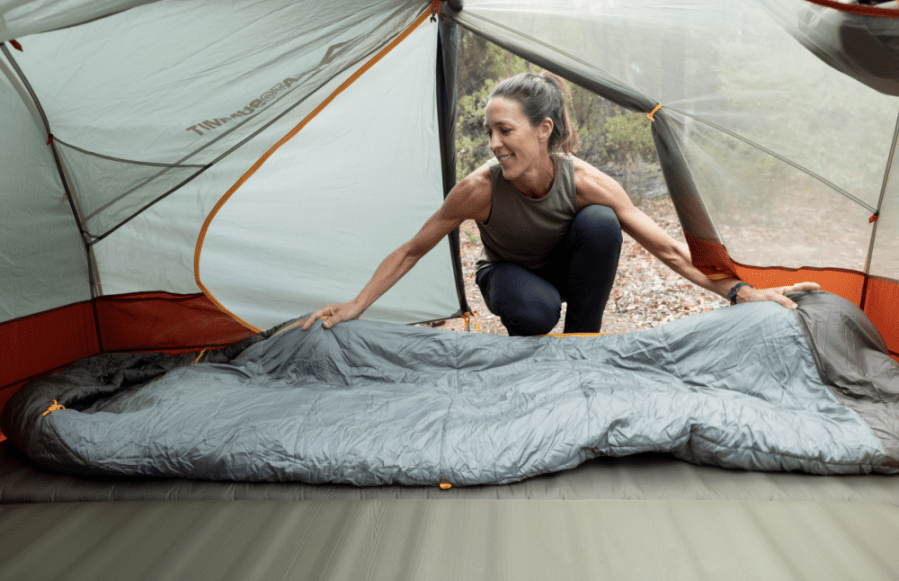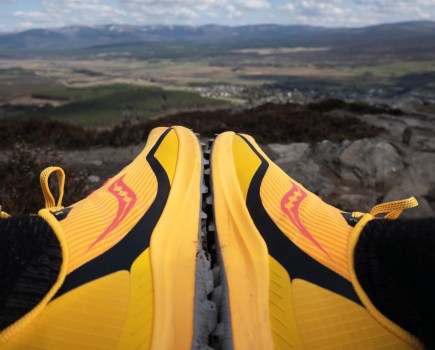If you are new to camping or you need to kit out your entire family, the chances are you will be looking for kit that is budget-friendly. For budget sleeping bags, we reckon they should cost less than £200 and, better still, if they are under £100. In this price range, you are more likely to find synthetic-fill bags and warmth ratings that are best suited for summer camping in the UK, or perhaps spring, summer and early autumn camping in Europe.
Main image: The Boab -1 impressed during tests | Credit: Sea to Summit
Nobody wants a cold, sleepless night, so choosing a sleeping bag is a mission critical decision, made more difficult if on a budget. It’s important to get a bag that is warm enough for the temperatures you expect, but any additional fill will add weight and bulk as well as warmth. For that reason, most budget sleeping bags are best suited for car camping, where weight and pack size are not major concerns. Temperature ratings are usually categorised as ‘comfort’ (self-explanatory), ‘limit’ (the lowest temperature at which an average person is likely to sleep), and “extreme” (a survival threshold, not one you’d want to test overnight).
Research shows that women lose more heat than men while asleep. Budget sleeping bags are usually unisex, and temperature ratings do not take gender or individual body type into account, so bear that in mind if you tend to sleep cold. Similarly, body size can affect how a bag performs for you. If there are cold spots because the bag is too big for you, it won’t feel as warm, despite all the extra fill. If a bag is too small, insulation becomes flattened around the feet and the hood won’t cover the head properly. For extra warmth, make sure the bag has an insulated zip, a deep hood that can be cinched down with a drawcord, and a neck baffle to keep out drafts.
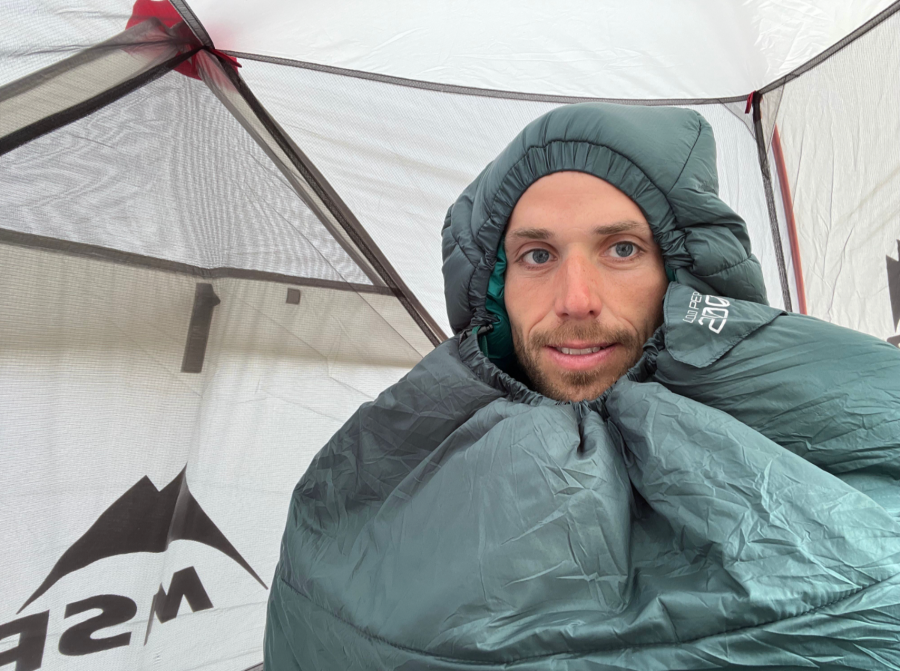
It’s quite likely that the insulation in a budget sleeping bag will be synthetic, which is often more suited for milder weather. It has the advantage of being easily washable, and maintaining warmth when damp, but the disadvantage of being bulkier and heavier than down. Increasingly, brands are sourcing recycled materials to fill sleeping bags, which lightens their impact on the planet. However, fill quality can vary, and cheaper materials tend to add more bulk and weight, whilst degrading faster over time.
Some brands reduce the width and length of their budget sleeping bags to save on cost, so it’s a good idea to check the size details to ensure you won’t feel too cramped. Also run your hands over the inner and outer fabrics to ensure they are going to feel soft and silky enough to sleeping and not too noisy.
Why you can trust The Great Outdoors
The Great Outdoors is here to help you make the most of your time outside. We have been helping people to explore from sea to summit, valley to mountain top for over 40 years. Our gear tests remain completely impartial. If you are wary of websites that only review brands that advertise with them, or sceptical of social media accounts always singing the praises of their latest freebie, you’ve come to the right place! Our reviews rank #1 for rigour, trustworthiness, and independence, and our gear testing team is the most experienced in Britain. With over 200 years’ experience between us, we are professional mountain leaders and instructors, wildlife photographers and rangers, outdoor authors, guidebook writers and trail addicts.
The best budget sleeping bags we’ve tested
Here’s our pick of the best budget sleeping bags currently on the market. We’ve given the temperature ratings for the specific bags in focus but many of these options will also come in cooler/lighter and warmer/heavier models. If you have a slightly bigger budget, it’s worth browsing our round up of the best sleeping bags.
| Quick List |
|---|
| Best for comfort: Sea to Summit Boab -1 (available from Tiso) |
| Greener Choice: Rab Solar Eco 3 (available from Rab) |
| Best for tall people: Vango Mantis 400 (available from Outdoor Action) |
| Lightest in test: Alpkit Cloud Peak 200 (available from Alpkit) |
| Best value: Highlander Rayet 250 (available from Highlander Outdoor) |
Best for comfort
Sea to Summit Boab – 1
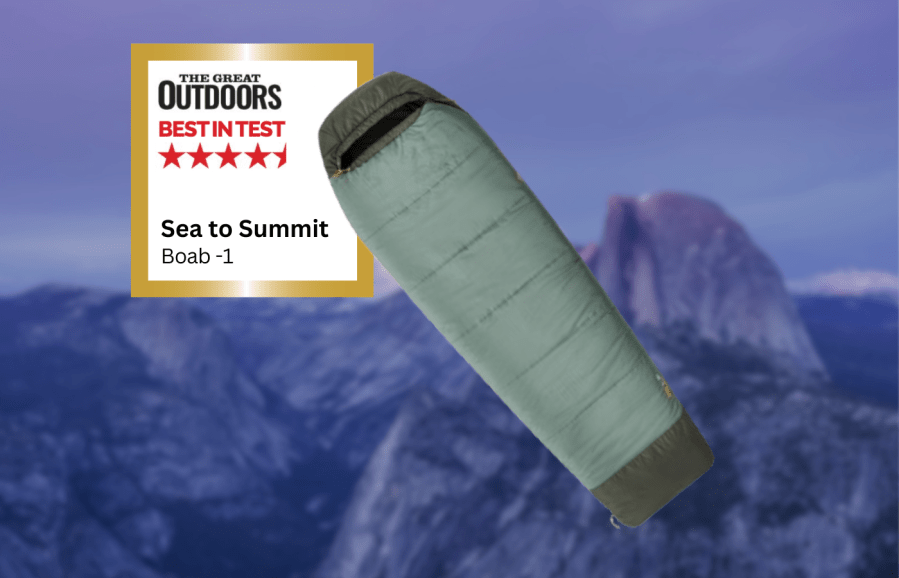
Lucy Wallace’s Greener Choice
With 100% recycled materials, the Boab is a greener choice for those seeking to reduce their ecological footprint.- true to life temp rating
- decent size range
- pricier end of budget
| Quick specs | |
|---|---|
| Price: $159 / £130 – £140 for wide and x-long sizes (available from Tiso) Weight: 1502g Fill: 100% recycled post-consumer synthetic insulation Shell: 50D recycled polyester with non-PFC DWR treatment Construction: offset synthetic fill layers Length: 185cm (regular) Rating: limit -1°C, extreme -9°C Sizes: short, regular, regular wide, long Women’s/men’s version: Unisex seatosummit.co.uk |
The Sea to Summit Boab -1 is a versatile three season sleeping bag made from 100% recycled synthetic fibres. It comes in four sizes, so it should be possible to find a version to suit most people. The shape is a gently tapering mummy design, with a square footbox and zip configuration, allowing the bag to be opened completely to use as a quilt in warmer temperatures. Alternatively, you can simply open the bottom to allow extra airflow by the feet.
There’s a generous hood which is easily adjustable, but no neck baffle which limits use in colder temperatures. I found that the temperature rating is pretty accurate. I sleep cold and usually need a warmer bag than recommended but the Boab rating seemed fair to me. I tested the Boab -1 in damp conditions in springtime, including one night where the temperature dropped below freezing in the early hours. Although I was chilly, I still managed to sleep, indicating that the bag performed well at its advertised temperature rating.
With 100% recycled materials, the Boab is also a greener choice for those seeking to reduce their ecological footprint.
Read more: Lucy’s full Sea to Summit Boab -1 review
Greener Choice
Rab Solar Eco 3
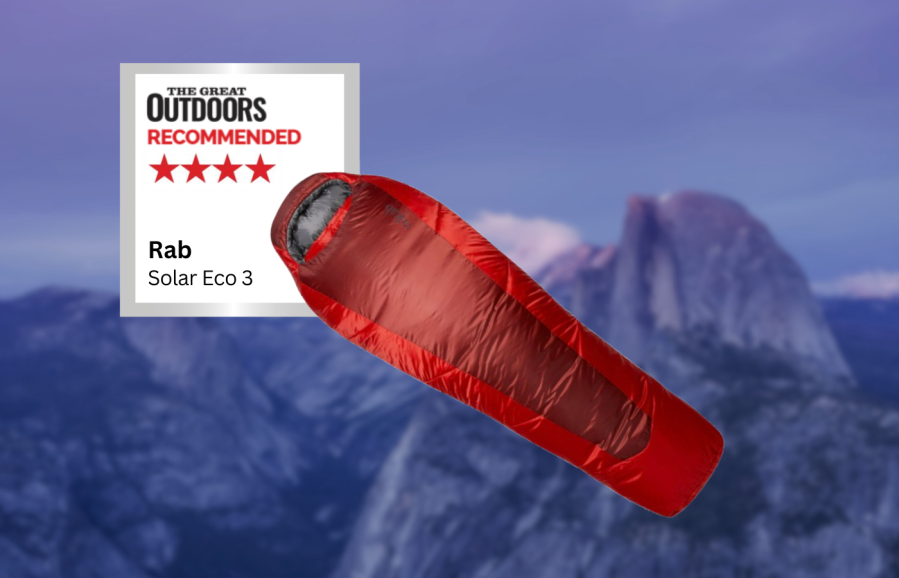
James Roddie’s Greener Choice
Two minor points aside, this is an excellent sleeping bag made with an admirable emphasis on environmental impact.- made almost entirely from recycled materials
- good warmth to weight ratio
- position of security pocket
| Quick specs | |
|---|---|
| Price: $194.95 / £180 (available from Rab) Weight: 1270g + 115g compression sack Fill: 100% recycled Stratus insulation Shell: 20D polyester ripstop Construction: Dual layer concertina blanket construction Zip: 3/4 length, 2 way on left or right Length: 220cm Rating: Comfort: 0°C; Limit -6°C Sizes: Regular or Long Women’s/men’s version: Yes rab.equipment/uk |
The sustainability credentials of this Rab Solar Eco 3 sleeping bag are impressive. Rab state that 96% of the total content is recycled, with essentially everything apart from the zips made from recycled materials. The Atmos ripstop polyester shell and lining is treated with a fluorocarbon free DWR coating and is highly water resistant. The insulation is made from recycled polyester, with a good warmth to weight ratio, and it is distributed with more fill on the upper where it’s needed most (and is not compressed by the sleeper). The bag uses elastic internal quilting, which brings the lining and insulation closer to your body. I didn’t feel aware of this at all when sleeping in the bag, but I certainly felt comfortably warm when using the bag in temperatures just above freezing.
The zip is 3/4 length, featuring a zip ‘plow’ which greatly reduces snagging. There is a zip baffle running the length of the zip, although the insulation there was minimal – something to be aware of if using at the lower end of the recommended temperature range. This is an excellent sleeping bag made with an admirable emphasis on environmental impact.
Read more: James’ full Rab Solar Eco 3 review
Robens Morraine III
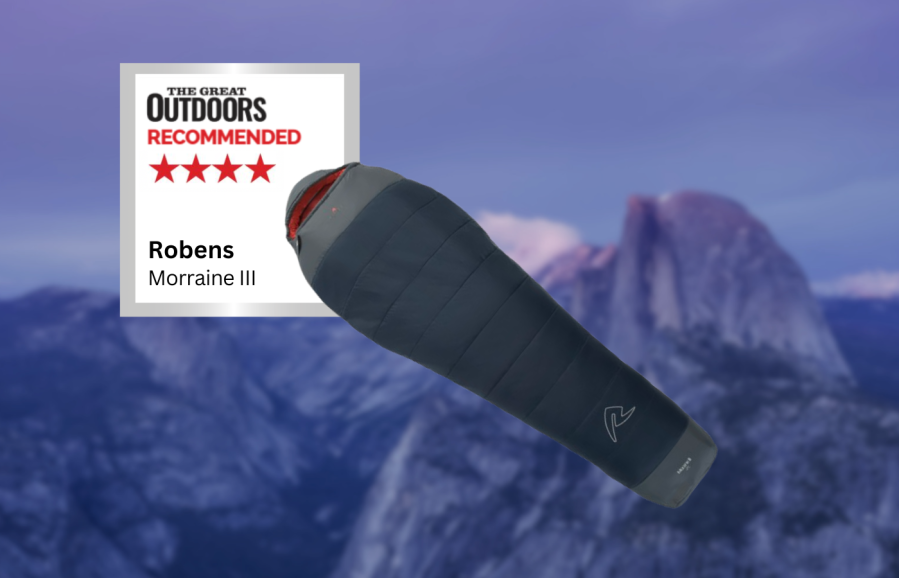
James Roddie recommends
Overall, this a very good sleeping bag which will last for many years if looked after properly.- durable
- PFC free materials
- no draught collar at shoulders
| Quick specs | |
|---|---|
| Price: no shipping to US / £89.99 (available from Outdoor Action) Weight: 1310g + 75g compression sack Fill: MicroThermo insulation Shell: 20D 400T nylon ripstop + 40D 290T nylon ripstop Construction: Double layer Zip: Full length, 2 way on left or right Length: 215cm Rating: Comfort: 3°C; Limit -2°C Sizes: Regular Women’s/men’s version: Unisex robens.de/en-gb |
The Robens Morraine III is described by the brand as a 2-3 season sleeping bag. I found I could get a comfortable night’s sleep in temperatures down to around 7℃, but I am sure warmer sleepers would cope with slightly lower temperatures without issues. There is a full-length insulated zip baffle, but no draught collar around the shoulders – a feature which colder sleepers are likely to miss. The bag feels fairly spacious, and the shark-fin footbox allows you to rest your feet without feeling restricted, but not so much it might lead to cold spots. The Microtherm insulation is highly compressible, making for a neat pack in the rucksack.
The zip is truly full length, allowing the bag to be easily used as a duvet, and it can be zipped into another Morraine III to create a double duvet. The anti-snag zip guard works superbly. As is the case with every Robens sleeping bag I have tested, the Morraine III comes with an excellent, lid-topped compression sack.
Read more: James’ full Robens Morraine III review
Best for tall people
Vango Mantis 400
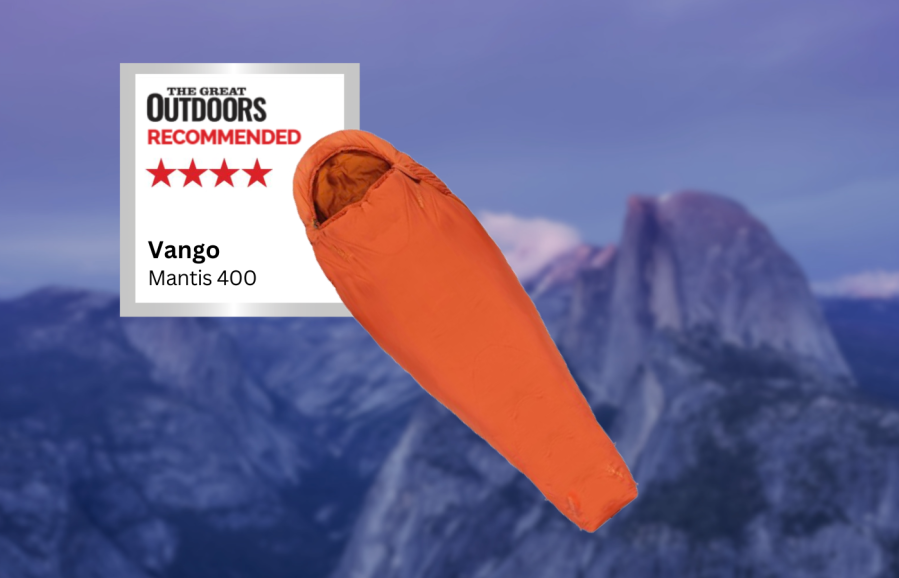
Lucy Wallace recommends
Despite my reservations about the temperature rating, the Mantis is an excellent value 3-4 season bag, particularly suited to taller folk on a budget.- warm for weight
- roomy
- did not feel as warm as advertised
- generous size less suited to smaller sleepers
| Quick specs | |
|---|---|
| Price: international shipping available / £90 (available from Outdoor Action) Weight: 1426g Fill: 4T Eco recycled synthetic filling Shell: 40D recycled Polair Active Eco, with aluminised Thermal Reverb layer Construction: sheets of synthetic filling Length: Max height 190cm Rating: limit -9°C, extreme -15°C Sizes: one Women’s/men’s version: Unisex vango.co.uk |
Vango ambitiously describe the Mantis as a four-season bag, with a comfort limit rating of a whopping -9°C. Although there is lots to like about this bag, for me, the temperature rating does not reflect real world performance. It’s worth noting that I tend to sleep cold and often need a warmer bag than suggested by official ratings. I tested the Mantis 400 in cool conditions with nighttime temperatures hovering around freezing and felt chilly at times.
The Mantis is well featured and includes a generous neck baffle to keep drafts out, insulated zip baffle, and a shiny reflective layer built into the insulation to help reflect heat back to the user. The shell has a soft cotton-like feel with a silkier lining, and there’s an internal pocket for small items such as a head torch. The shape is a traditional mummy cut, with narrow, shaped foot box and wide shoulders.
Despite my reservations about the temperature rating, the Mantis is an excellent value 3-4 season bag, particularly suited to taller folk on a budget. It’s bulky, as you would expect for a warm synthetic bag, but does compress sufficiently to pack into a backpacking rucksack for overnight adventures. The Mantis is also a Greener Choice for those looking to reduce their ecological footprint, entirely from recycled materials.
Read more: Lucy’s full Vango Mantis 400 review
Lightest in test
Alpkit Cloud Peak 200
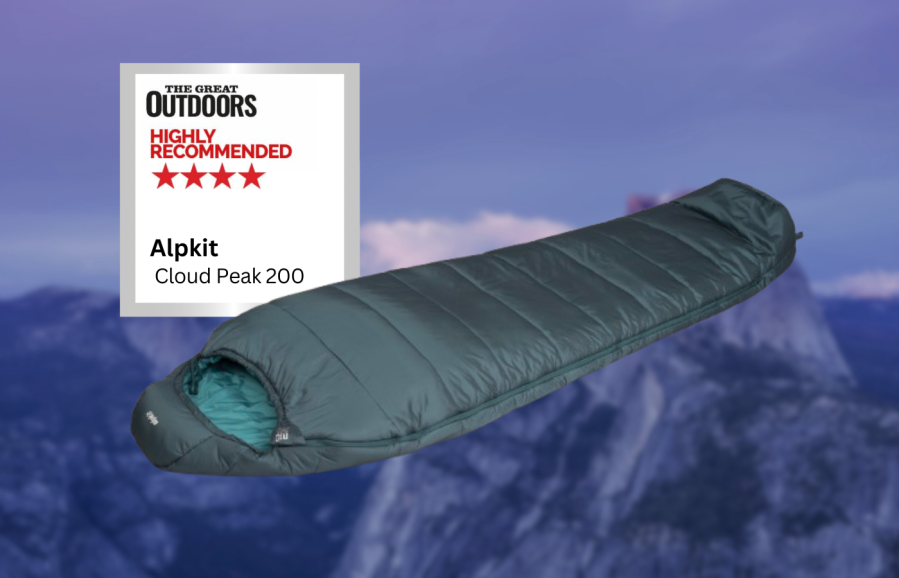
James Roddie highly recommends
Overall, this feels like a sleeping bag which will last, and offers excellent value for money.- recycled fill
- high quality materials
- no internal pocket
- ambitious sleep limit rating
| Quick specs | |
|---|---|
| Price: international shipping available / £99.99 (available from Alpkit) Weight: 1120g + 120g compression sack Fill: 200g 750FP Downtek Hyd Shell: 20d 300T PFC free Nylon Construction: Stitch-through Zip: Full length, 2 way on left or right Length: 200cm Rating: Comfort: 8℃, Limit: 4℃ (Alpkit Sleep Limit 0℃) Sizes: Regular Women’s/men’s version: Unisex alpkit.com |
Taller campers may find this bag a little on the short side. I am 180cm tall and found it to be a good length but would not have liked it to be any shorter. At 1240g, the warmth to weight ratio is good for a bag for this price. The stitch-through construction helps to keep the weight and bulk down.
The temperature ratings are a little confusing, ranging from 0℃ to 4℃. Certainly, 0℃ seems ambitious, but I am a cold sleeper. The zip extends almost to the feet, making ventilation easy on warm nights. There is a full-length zip baffle which does a very good job at preventing heat loss through the zip. The draught collar can be tightened up close to your body, and I was pleased to find it tightens evenly, rather than bunching up around the drawcord as is the case with some sleeping bags.
The supplied compression sack is also excellent – being sturdy and water-resistant, making you less likely to feel the need to purchase a second sack. The materials feel high quality throughout, and the internal fabric is soft to the touch. I like that this bag is also available with a right zip for left-handers. Overall, this feels like a sleeping bag which will last, and offers excellent value for money.
Read more: James’ full Alpkit Cloud Peak 200 review
Best value
Highlander Rayet 250
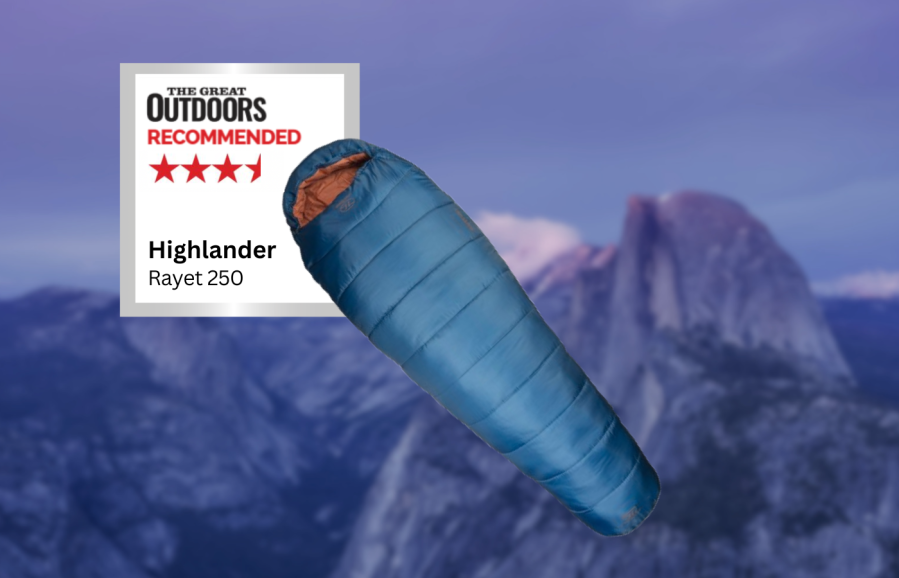
James Roddie recommends
In summary, this is good sleeping bag for the price, and it performs best in 2 season conditions.- tough shell material
- spacious
- quite heavy for the warmth provided
| Quick specs | |
|---|---|
| Price: international shipping available / £59.99 (available from Highlander Outdoor) Weight: 1370g + 75g compression sack Fill: 250g/m2 single layer 40% siliconised hollow fibre, 60% polyester Shell: 210T polyester ripstop Construction: Stitch-through Zip: 3/4 length, 2 way on left Length: 220cm Rating: Comfort: 6℃, Limit: 1℃ S Sizes: Regular Women’s/men’s version: Unisex highlander-outdoor.com |
The Highlander Rayet 250 delivers a lot for its RRP of £59.99. The shape of this sleeping bag is a little less tapered than a ‘mummy’ bag would often be, with a wide foot box. This may be welcome for people with larger feet, or who dislike the sometimes-restrictive feeling of a narrower footbox. I did not find that the extra space led to cold feet, even when camping in chillier conditions. I found the comfort rating to be overly optimistic, but I am a cold sleeper, and this will vary from person to person. The synthetic insulation continues to perform nicely when damp – a definite advantage if also using a budget tent, some of which can be prone to condensation.
The materials feel tough and the shell is highly tear resistant. The draught collar and hood can both be tightened to give a very snug fit to reduce heat loss. Zips on budget sleeping bags often snag repeatedly on the surrounding fabric whilst being adjusted, but I didn’t have that problem with the Rayet. In fact, I had fewer snagging issues than on some far more expensive bags.
I noted that Highlander describes it as a full-length zip, but it is closer to 3/4 length. There is an internal security pocket, and this is easy to reach and is deep enough to store a larger smartphone. Weighing a total of 1445g, this bag is best suited to short backpacking trips and car-camping.
Read more: James’ full Highlander Rayet 250 review
Alpkit Ultra 120
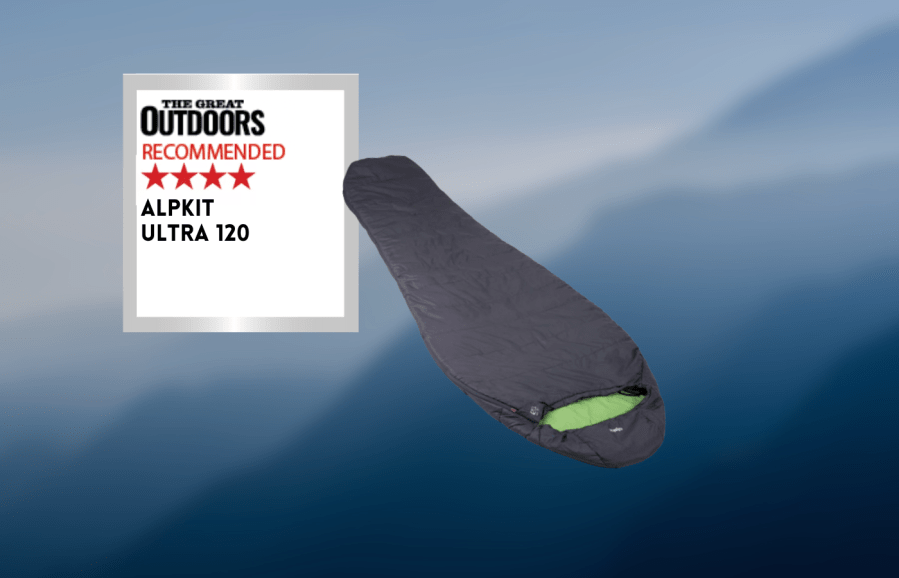
John Manning Recommends
In use, I found the bag didn’t offer the instant warmth I’ve appreciated in heavier synthetic bags and down bags, though the insulation started to kick in after a few minutes.- Weight
- Low bulk
- Price
- Tight fit
- Restricted to warmer nights
| Quick specs | |
|---|---|
| Price: £199.99 Weight: Long 632g (613g + 19g stuffsack) (Alpkit’s stated weights = regular 590g; long 640g) Fill: 120gsm water-repellent PrimaLoft Gold Insulation Shell: Outer: PFC-free DWR treated 20d 420T nylon; Inner: 420T nylon Construction: Mummy-shaped, stitched through Zip: Half-zip with full-length inner baffle Length: Regular: Internal length 190cm; Long: Internal length 210cm Rating: 1°C (Alpkit Sleep Limit) Sizes: Regular 190cm; long 210cm Women’s/men’s version: Unisex URL: alpkit.com |
The Alpkit Ultra 120 is a budget sleeping bag priced at £200, but it is a lean, trim bag suitable for hardcore lightweighters or mountain marathon-type events. It comes with PrimaLoft Gold insulation, one of the best warmth-to-weight ratio synthetic fills on the market, making it lightweight and occupying minimal space in your pack. The bag’s zip is also lightweight, as zips weigh more than fabrics and fills. However, its minimalist nature means it is tight and may be used for warmer nights, possibly one and two-half seasons.
Some backpackers might find its potential applications limited due to its tightness and low bulk, but for warm, one-night summer wild campers, the lightweight and low bulk are a fair trade for a single night’s reduced discomfort. For extended, remote backpacking adventures, the extra space in your pack for food and other essentials might be appreciated.
In use, the Alpkit Ultra 120 doesn’t offer instant warmth like heavier synthetic bags and down bags, but the insulation kicks in after a few minutes, making it comfortable. There is room to wear a layer of insulation-boosting clothing in the bag, but this would compromise the wriggle-room.
Read John’s full Alpkit Ultra 120 Review
Robens Glacier II -5°C
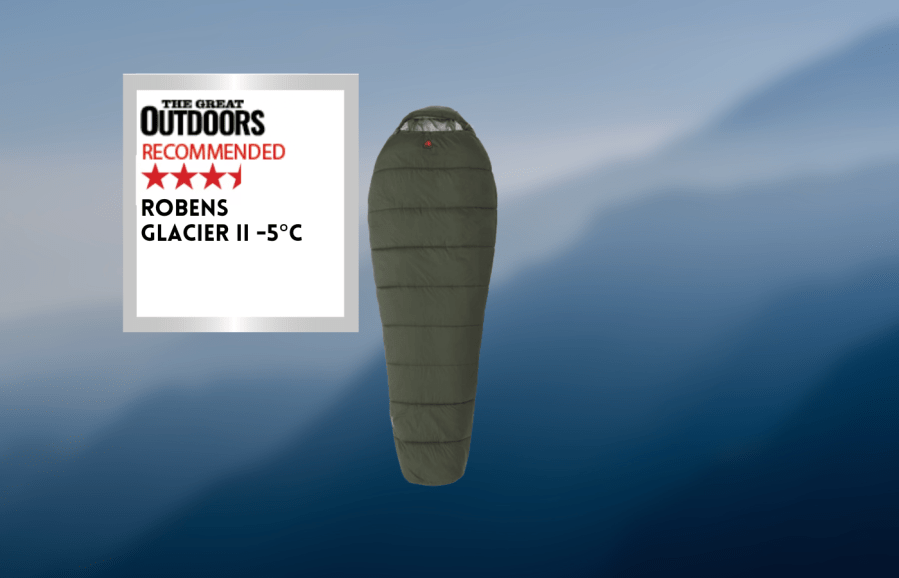
John Manning Recommends
For all its weight and bulk, it’s comfortingly cosy, roomy, three-season bag which warms quickly once you slide in.- Warm
- Generous zip and collar baffles
- Inner zipper stow garage
- Bulky
- Zip snag
| Quick specs | |
|---|---|
| Price: £117.99 Weight: 1572g (1487g + 86g compression sack ) (Roben’s stated weight =1380g) Fill: AirThermo (100% polyester) Shell: 40D 290T nylon ripstop (100% nylon) Construction: Mummy-shaped; double layer on top, single layer on bottom Zip: Two-way, full-length YKK auto lock; choice of left or right Length: 220cm (body length 195cm) Rating: Comfort: men -5°C, women 1°C. Extreme: -22°C Sizes: Single length Women’s/men’s version: Unisex URL: www.robens.de/en-gb |
The Robens Glacier II -5°C is a budget sleeping bag that provides ample wriggle-room for those who appreciate spaciousness. Its Loft Expander system allows the upper to swell, accordion-like, as you wriggle and turn, then contract around you as you settle, ensuring no momentary cold spots. The bag has generously filled draught baffles at the collar and down the length of the zip, with the front baffle having a neat cup to prevent encumbered mouth and chin. The footbox is spacious and designed in a “shark’s fin” shape, providing unconstricted toe space.
The sample supplied had a full-length right-hand zip, which resulted in flat-corded drawcords on the left shoulder. The hood’s cord is color-coded, but this may be irrelevant in the darkness of a tent. Small devices can be stored in an accessories pouch beneath the inner collar baffle to keep their batteries alive on cold nights.
The full-length YKK zip has a stow port at the foot, but lacks anti-snag devices and tends to snag on the shell fabric. Although the synthetic-filled Glacier II is about 50% heavier than many more expensive down-filled bags with similar temperature ratings, it is a comfortable, roomy, three-season bag that warms quickly once you slide in.
Read John’s full Robens Glacier II -5°C Review
Nemo Forte Women’s 35
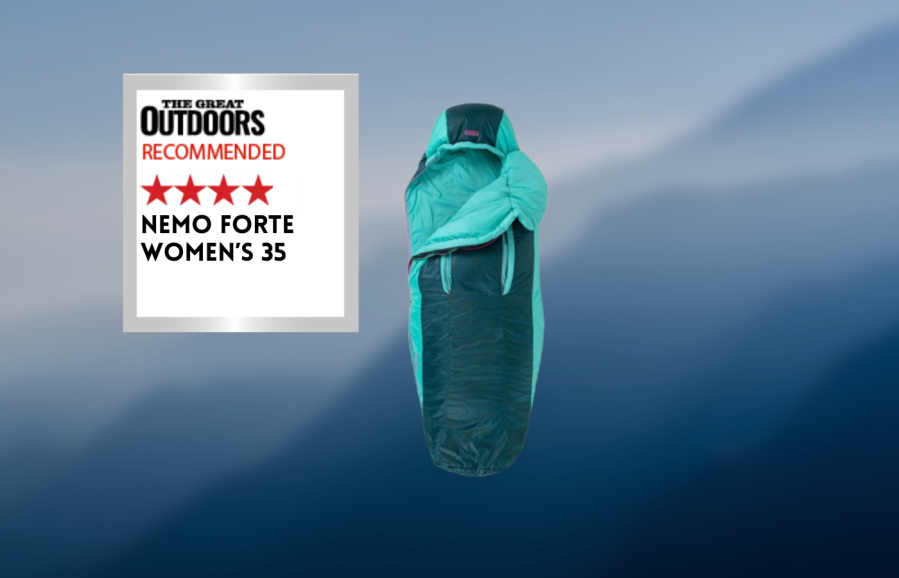
Fiona Russell Recommends
Overall, I slept really well in this bag and because it is a three-seasons bag at a price of under £200, I am recommending it for people with a tighter budget.- Price
- Compression bag
- Eco Features
- Weight
- Zip
| Quick specs | |
|---|---|
| Price: £179.99 reg, £199.99 long Weight: 1350g (reg) Fill: 800g Zerofiber™ PCR synthetic (100% post-consumer recycled content) Shell: 30D 100% recycled polyester, Bluesign approved ripstop; Lining: 20D 100% recycled polyester taffeta Construction: box wall, stitch through Zip: full-length, two-way Length: 185cm (reg), 198cm (long) Rating: comfort 2C , limit 0C Sizes: reg, long Women/Mens version: Yes URL: nemoequipment.com |
The Nemo Forte is a heaviest synthetic sleeping bag, providing warmth even in damp conditions. It features a compression stuff bag and a large mesh storage bag, providing good warmth in night-time temperatures above 2C/3C. The bag has two Thermo Gill™ vents for greater temperature control. The Blanket Fold™ draught collar is fine, but an integrated full-circumference baffle is preferred. The integrated pillow pocket is excellent for storing spare clothes or an inflated pillow. The inner fabric is silky, but the outer fabric is noisy. Nemo’s Classic Spoon™ shape offers ample space for sleeping, but the full-length side zip is snaggy. The Forte is part of Nemo’s more planet-friendly Endless Promise range, which includes products being repairable, resaleable, and recyclable at the end of life. The bag is recommended for people with a tighter budget and is a three-seasons bag priced under £200.
Read Fiona’s full Nemo Forte Women’s 35 Review
Sierra Designs Women’s Night Cap 20
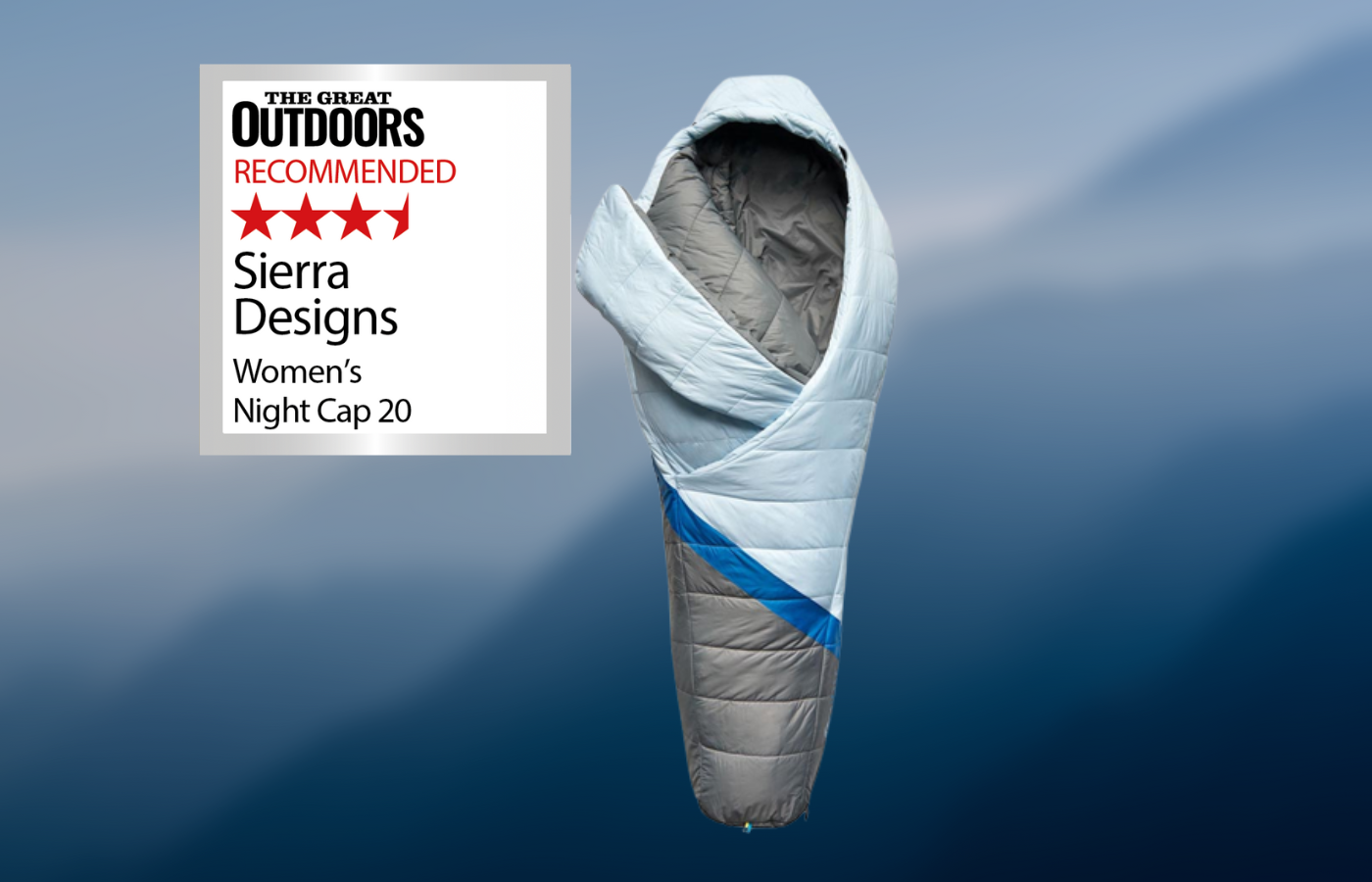
Lucy Wallace Recommends
Overall, it’s clever and warm, with a smaller environmental footprint than many other synthetic bags; and although it won’t suit everybody, some will love the versatile comforter system.- Versatile
- Good for warm sleepers
- Zipless design can lead to draughts
| Quick specs | |
|---|---|
| Price: $180 / £160 (Buy now from Amazon) Weight: 3.5lbs | 1626g Fill: 1276g recycled Sierraloft Eco Synthetic Shell: 20D recycled polyester Construction: synthetic fill Zip: none Length: 74inch | 188cm Rating: comfort +1°C, limit -5°C Sizes: one Men’s version: yes |
Sierra Designs has pioneered innovative zipless bag designs, such as the Nightcap 20. The wrapover shape creates versatility for warm sleepers who like to vent through the night and allows for spreading out a bit if needed. The drawback is that it can fall open with too much movement, leading to draughts. The bag includes a sleeping mat sleeve on the base and a neck baffle, and the Eco Synthetic fill is made from recycled water bottles and the shell is recycled. Overall, it is clever and warm, with a smaller environmental footprint than many other synthetic bags, and some will love the versatile comforter system.
Read Lucy’s full review on Sierra Designs Women’s NightCap 20
Robens Icefall Pro 900
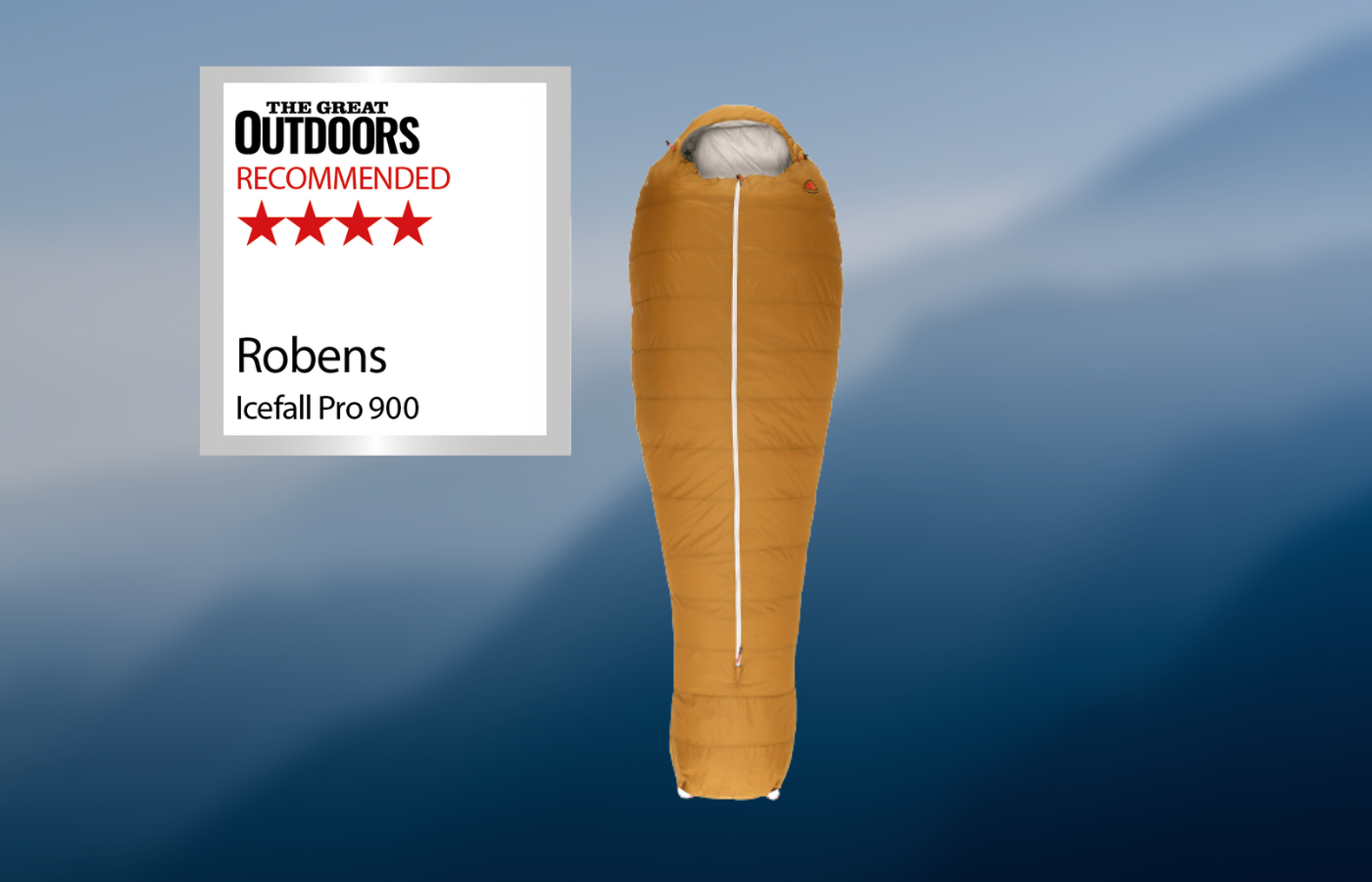
James Roddie Recommends
Whilst quite heavy and lacking a shorter version, the Icefall Pro 900 is a well-designed sleeping bag, particularly if you prioritize warmth and comfort.- Very warm
- Comfy
- Versatile centre zip
- Heavy
- Long with no short option
| Quick specs | |
|---|---|
| Price: $200 / £190 (Buy now from Amazon) Weight: 3.2lbs | 1495g Fill: 900g MicroThermo Ball 600FP polyester Shell: 20D ripstop nylon Construction: box wall Zip: 2-way, near-full-length in centre Length: 87inch | 220cm Rating: comfort 0°C, limit -5°C Sizes: long Women’s version: no |
The Icefall Pro 900 is the warmest sleeping bag in this review due to its 900g MicroThermo Ball synthetic insulation. It is aimed at taller people and has a high waist drawcord to keep the warmth in. It has a zip in the centre of the bag, which makes getting in and out of the bag much easier and allows for even ventilation over the core. There is no side ventilation zip, but it is easy to undo the zip almost to the feet and use the bag like a quilt in warmer conditions. Whilst quite heavy and lacking a shorter version, the Icefall Pro 900 is a well-designed sleeping bag, particularly if you prioritize warmth and comfort.
Read James Roddie’s full review on Robens Icefall Pro 900
FORCLAZ Trekking Sleeping Bag MT500
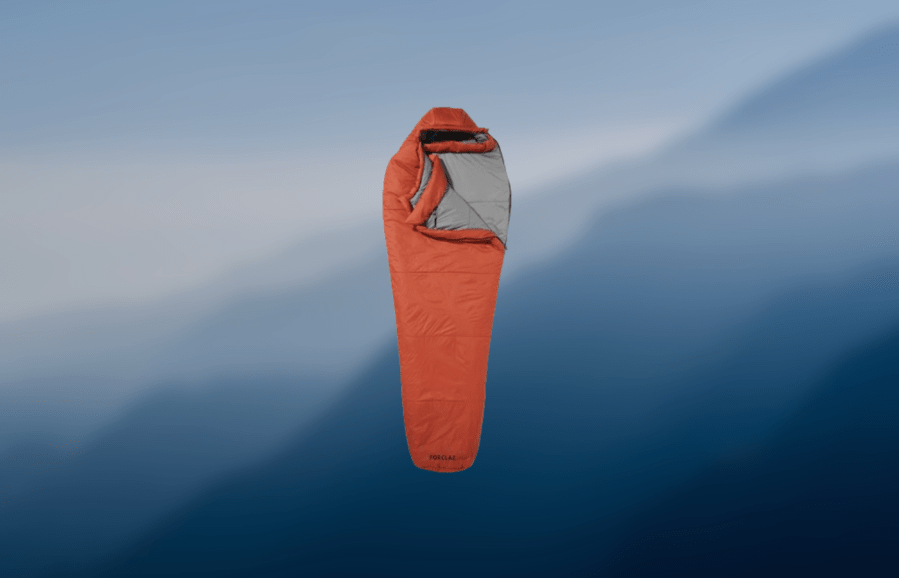
Fiona’s Verdict
If you get hot in the night, the Forclaz might well be ideal for you because it is nicely breathable and the side zips allow you to vent the bag really easily.- Compact
- Compression bag
- Price
- Weight
- Noise
| Quick specs | |
|---|---|
| Price: £69.99 Weight: 1600g (size M) Fill: 100% polyester Shell/lining: 100% polyamide. Construction: box wall, stitched Zip: 2 x 2-way, ¾ length Length: S: 1.6m, M: 1.7m, L: 1.85m Rating: comfort 0C, limit -5C Sizes: S, M, L Women/Mens version: Unisex URL: www.decathlon.co.uk |
It’s great to see a choice of three lengths of this unisex bag to suit different heights but you should note the width is likely to fit only slim to medium sized people. For the price, the bag is a respectable weight and it can be packed down to a fairly small size thanks to the compressible stuff bag. However, it’s not a product I would want to take on longer backpacking expeditions when lighter weight gear is more appealing.
The synthetic insulation comprises two layers of polyester wadding of different weights, 115 g/sqm and 150 g/sqm. The warmth is good although I’d reserve the Forclaz for summer and evenings of 0c or above, unless you are a particularly warm sleeper. The shoulder baffle helps to keep the warm air generated by your body inside the bag and the hood can be neatly cinched around your head.
There is a two-way zip entrance on both the left and right-hand sides of the bag.Does any bag need two zips, though? I’d rather the brand reduced the weight by having one zip. I do like the large zip pulls and the zips run generally quite freely.
If you get hot in the night, the Forclaz might well be ideal for you because it is nicely breathable and the side zips allow you to vent the bag really easily. Sadly, the fabric is a bit noisy, which may or may not bother you.
Decathlon tell me the FORCLAZ Trekking Sleeping Bag MT500 has been designed to reduce its environmental impact. The company reports: “The product is made with a CO2 equivalent reduction of 20% compared to the previous models of this product.” I guess that’s a start but there is so much more they could be doing to reduce the effects of materials, manufacture and transportation on the climate.
Kelty Women’s Cosmic Synthetic 20
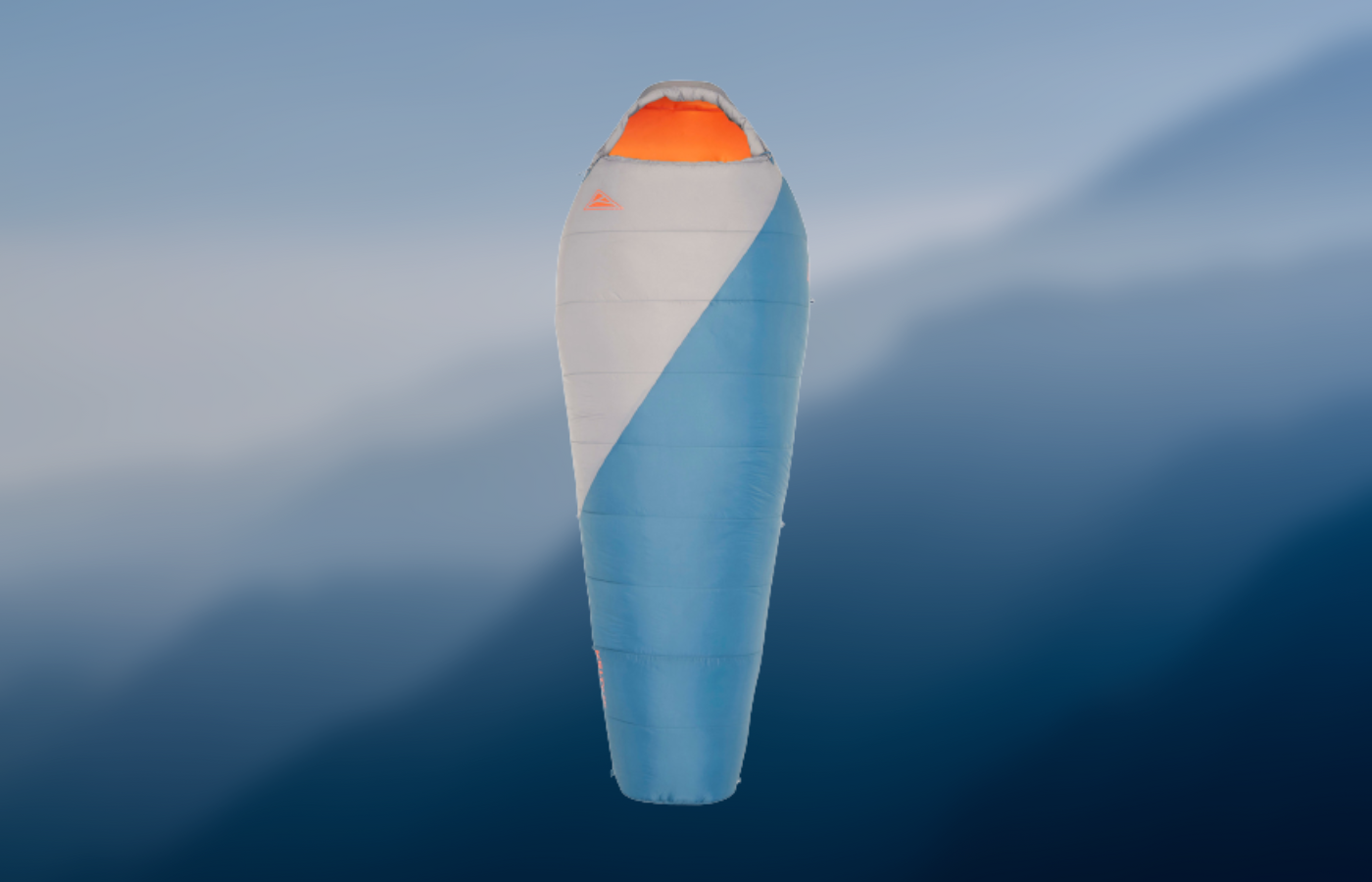
Lucy Wallace’s verdict
Despite drawbacks, the Cosmic 20 synthetic sleeping bag is a great choice for those seeking warmth and affordability in their hiking gear.- Good value
- Warm
- Heavy
- Not very compressible
| Quick specs | |
|---|---|
| Price: $110 / £90 Weight: 4.1lbs | 1856g Fill: 1300g CirroLoft Shell: 380T nylon taffeta Construction: synthetic fill Zip: Kelty’s own brand ¾-length two-way Length: 74inch | 188cm Rating: comfort -4°C, limit -11°C Sizes: one Men’s version: yes |
The Cosmic 20 synthetic sleeping bag is a great value for warmth and affordability, offering a comfort rating of -4°C. It weighs 1856g, has a 1300g CirroLoft fill, and is made of 380T nylon taffeta shell. The bag features non-adjustable neck baffles and a drawcord for heat retention. It is suitable for people up to 172cm tall and has a wide footbox for side sleepers. The bag is heavy at 1856g but has an advertised weight of 1810g. However, the CirroLoft synthetic fibers feel stiff and bulky, resulting in lack of compressibility. The minimum pack size is 41x25cm, making it best suited for car camping. Despite these drawbacks, the Cosmic 20 synthetic sleeping bag is a great choice for those seeking warmth and affordability in their hiking gear.
Read Lucy’s full review on Kelty Women’s Cosmic Synthetic 20
Deuter Orbit -5
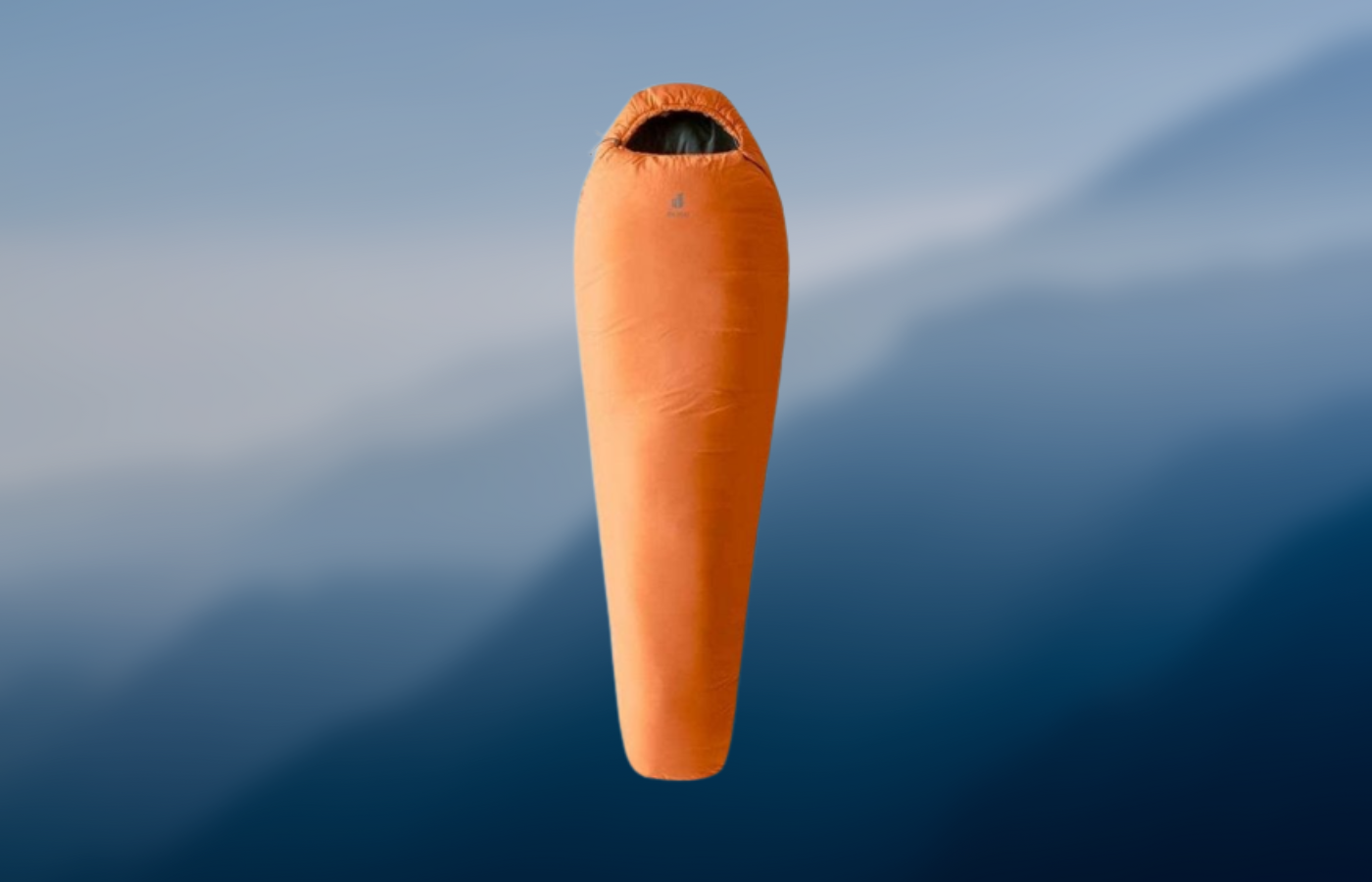
James Roddie’s verdict
For general three-season camping, this is a warm and affordable sleeping bag, but it is large and heavy, and if carrying it whilst backpacking you will notice the weight quickly.- Warm
- Affordable
- Durable
- Heavy
- Large when packed away
| Quick specs | |
|---|---|
| Price: International shipping / £115 Weight: 4.03lbs | 1830g Fill: 900g high-loft hollowfibre Shell: 50D Rec Pes ripstop Construction: 2-layer Zip: 2-way, full-length on left |Length: 81inch | 205cm (regular) Rating: comfort +1°C, limit -5°C Sizes: regular, large Women version: yes |
The Deuter Orbit -5° is a warm, affordable sleeping bag that is not aimed at lightweight backpackers. It is large and heavy, but it is well-insulated and has a thick baffle and draught collar to keep warm air in. The hood is warm, but it does not extend over the top/front of the head as much as it would like. The main two-way zip features a large pull, making it easy to find and use during the night. The anti-snag zip guard is an effective feature, as snagging zips is a common annoyance with sleeping bags. For general three-season camping, this is a warm and affordable sleeping bag, but it is large and heavy, and if carrying it whilst backpacking you will notice the weight quickly.
Read James Roddie’s full review on the Deuter Orbit -5
How we test
Lucy Wallace is 5’6” with narrow shoulders and is a cold sleeper. The bags were tested on overnight camps in Wales in mixed, rainy and cool conditions. Weights supplied using her own digital scales and include the stuff sack.
James Roddie is 5’9” tall with average width shoulders. He tends to be a ‘cold sleeper’. He tested the sleeping bags in a variety of weather conditions in the Scottish Highlands during the Spring. He weighed the sleeping bags (including stuff sacks) using his own scales.
What features to look for in budget sleeping bags
Temperature Ratings: The European Standard
The ISO 23537 rating provides a means of comparing sleeping bags for warmth. Most companies use it or an equivalent. It should only be used as a guide, however. It doesn’t mean you will be warm at the comfort limit temperature or even the comfort one. Cold sleepers should add a few degrees or more to the temperature ratings, whether you’re looking at budget sleeping bags or not.
ISO 23537 gives these temperature ranges for a sleeping bag:
- Comfort: the temperature range at which a “standard woman” in a relaxed posture should be comfortable.
- Transition/Comfort Limit: temperature range in which a “standard man” in a rolled-up body position should be comfortable.
- Extreme: In this range, feeling very cold is to be expected. There is a risk of hypothermia. A sleeping bag should only be used in this range in an emergency.
The ratings are calculated with a mannequin covered in heat sensors. The mannequin is dressed in thermal long-sleeved top and leggings plus long socks and placed in the sleeping bag on a sleeping mat.
The key rating is the Comfort one as this gives an idea of the lowest range of temperatures for warmth for most people. Hot sleepers may find the Comfort Limit temperature okay. Overall, though, I’d say that if you have to curl up to stay warm you’re pushing the limits of a bag.
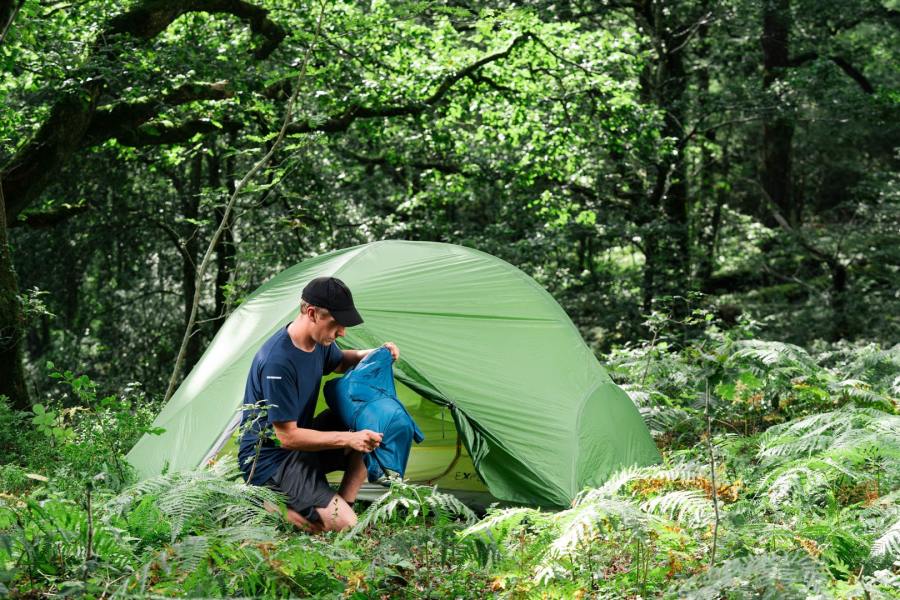
The Extreme rating should be ignored. Most people will feel unpleasantly cold long before this temperature is reached. Researching this feature I found some sleeping bags where only the Extreme rating was given. I’d avoid any bags where this is so. I’d also be wary of those that emphasise the Extreme rating and call themselves four-season bags when the comfort temperature isn’t adequate for winter.
Take a look at our guide on sleeping bag ratings and temperatures for more information.
Budget sleeping bags: other factors
Temperature ratings are a good guide as to the warmth of a sleeping bag but there are other important factors. The key ones are sleeping mat and shelter. The fill of a sleeping bag is crushed under you, so a good mat is needed to prevent you losing heat to the ground. A double-skin two person tent with all the doors zipped shut will add a few degrees warmth. Single-skin tents and tarps are not as warm. Wearing dry clothing in a bag also boosts warmth.
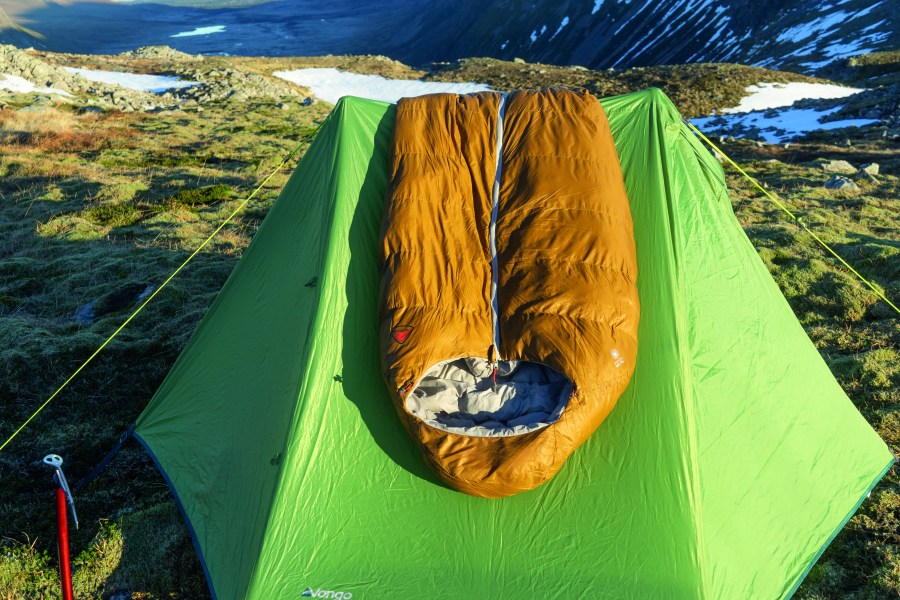
Budget sleeping bags: synthetic or down?
Budget sleeping bags are available with both synthetic and down fills. Both have advantages and disadvantages.
Synthetic Fill
Advantages
- Lower cost
- Retain some warmth when damp (though still cold when sodden)
- Reasonably quick drying
Disadvantages
- Heavier than down for the same warmth
- Bulkier to pack
- Shorter life
- Only comfortable over a narrow temperature range
Down Fill
Advantages
- Lighter weight
- Lower packed bulk
- Long life
- Comfortable over a wider temperature range
- Biodegradable
Disadvantages
- Initial expense
- Slower drying (though water-resistant down dries almost as fast as synthetics)
- Harder to clean
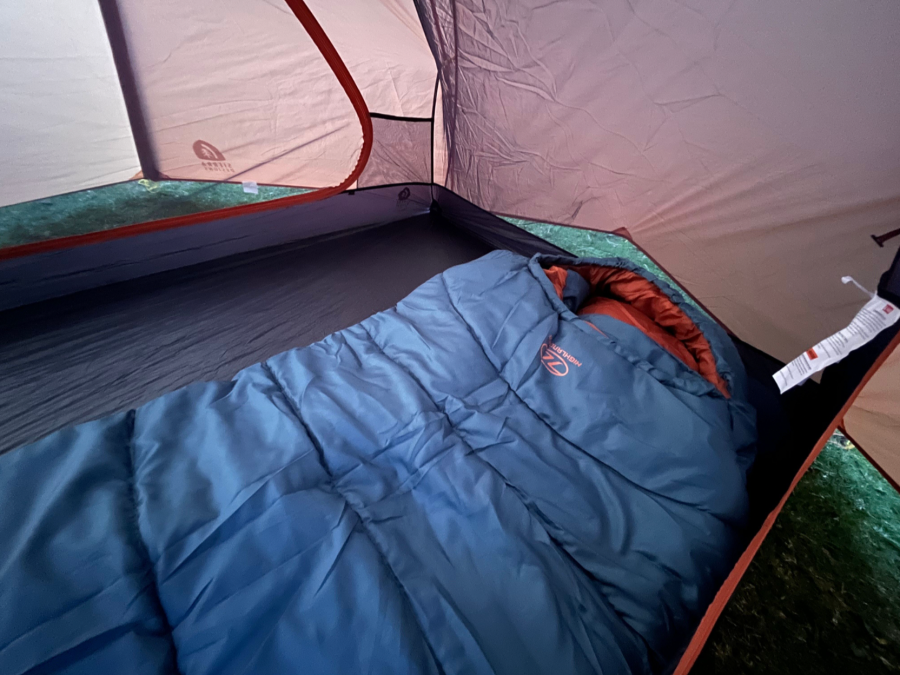
For more info on sleeping bags check out these related articles:

